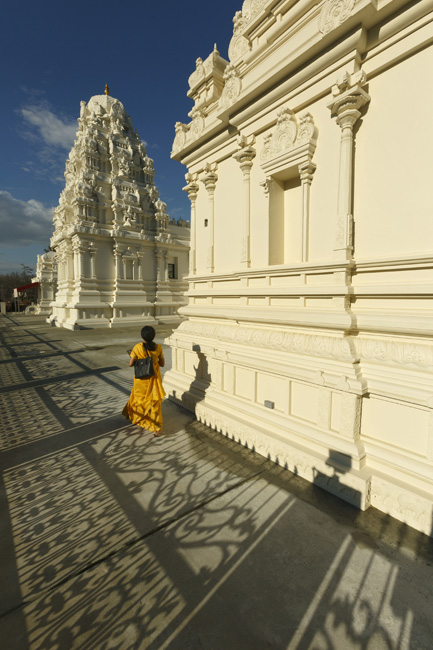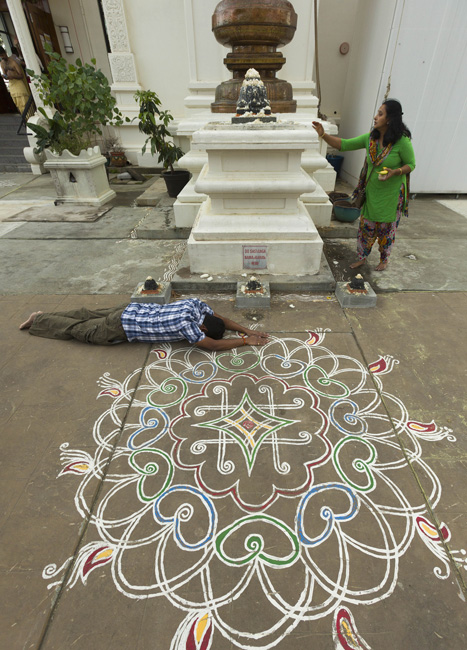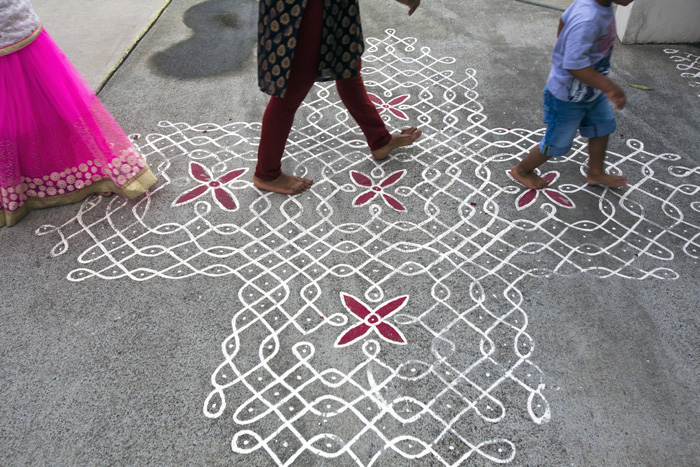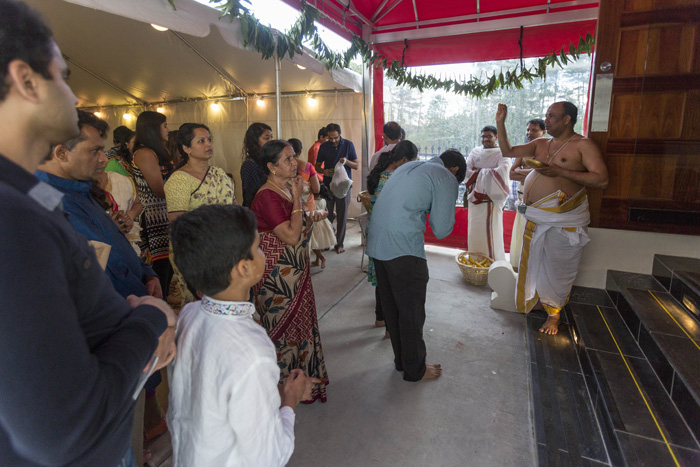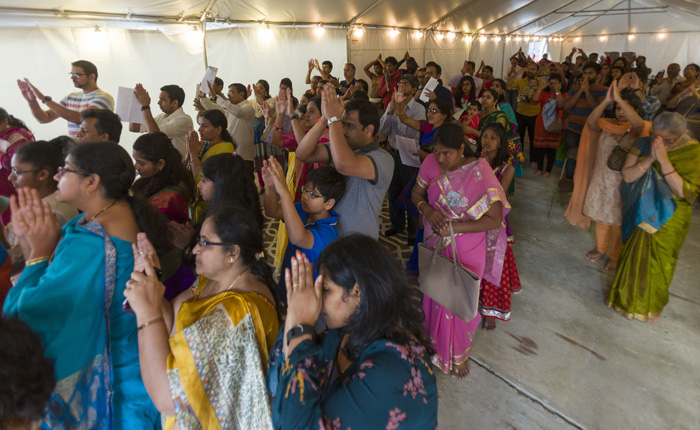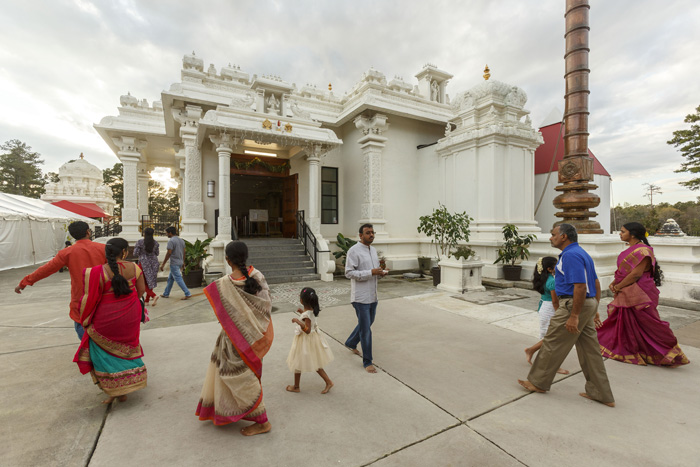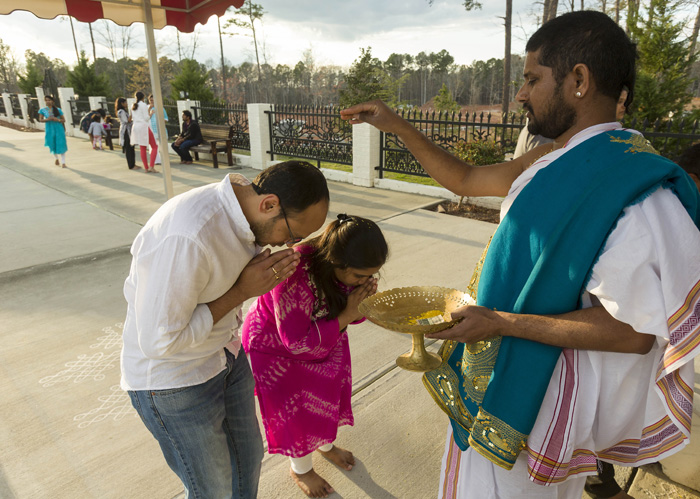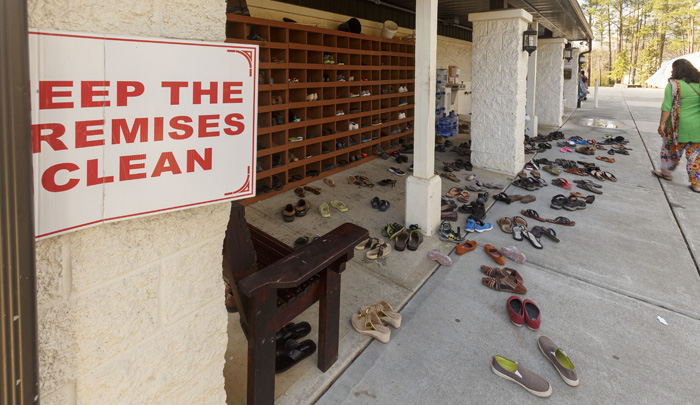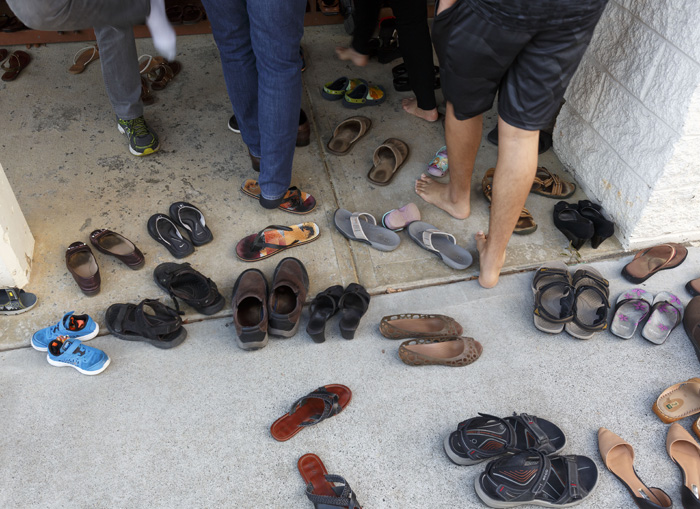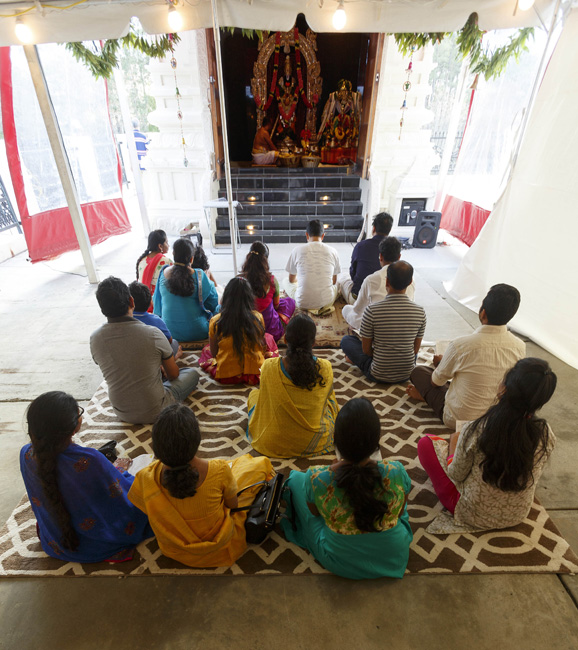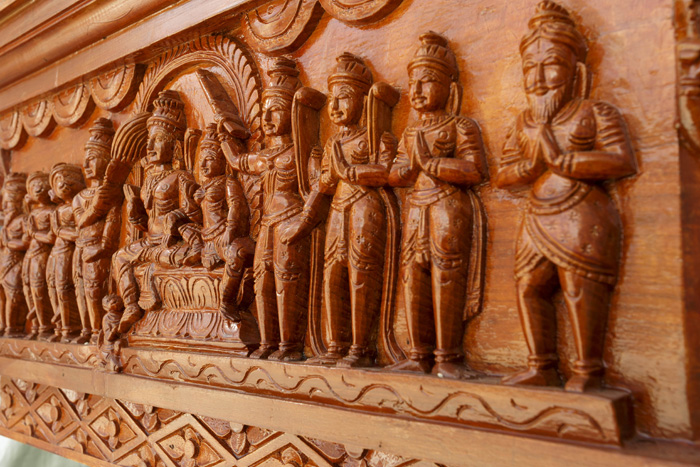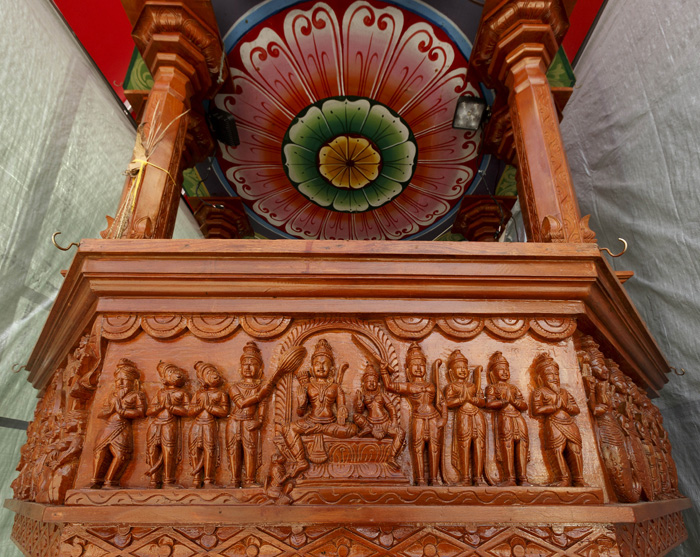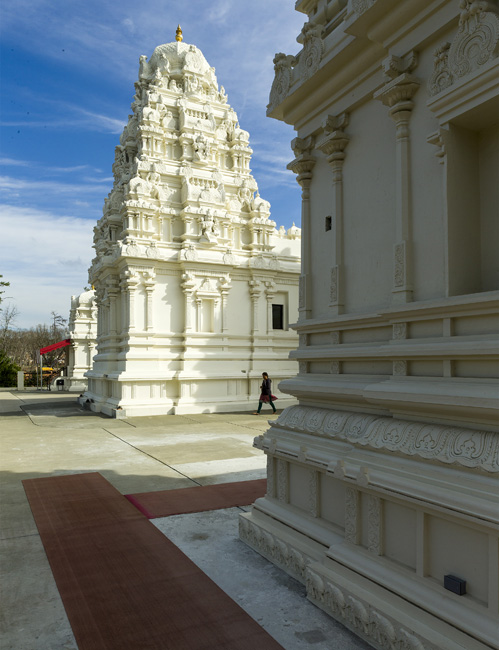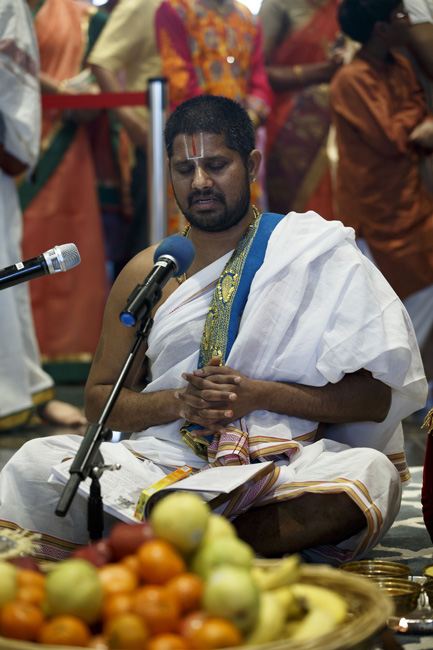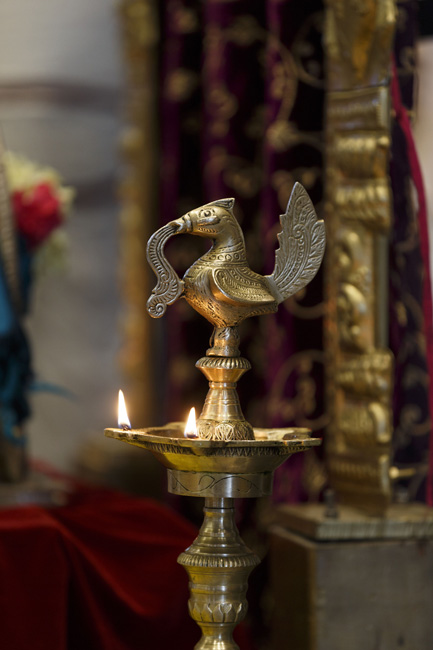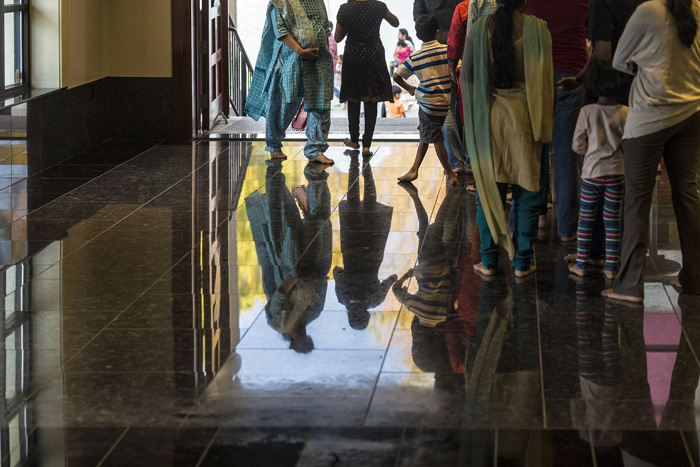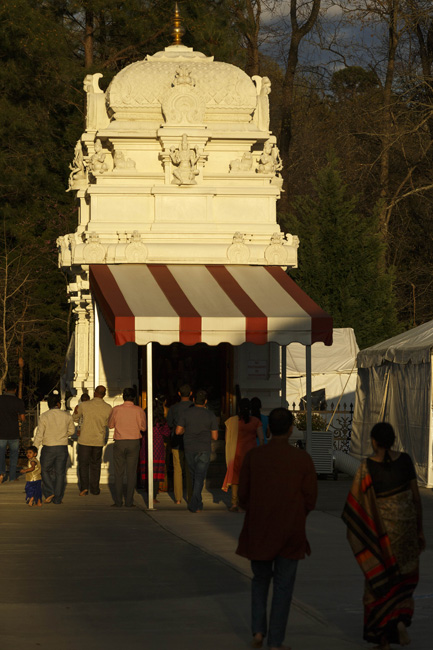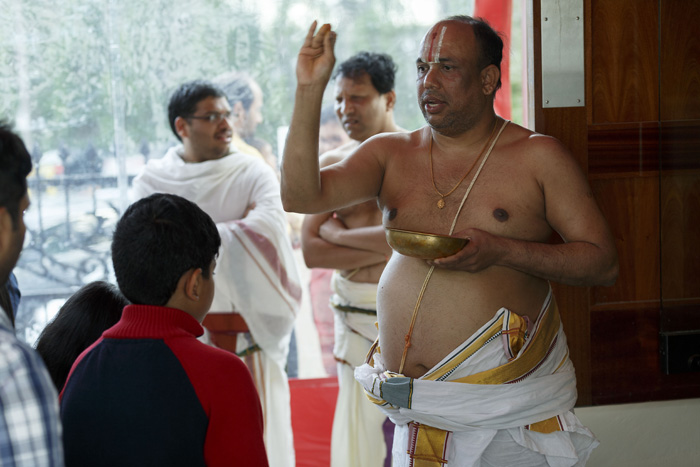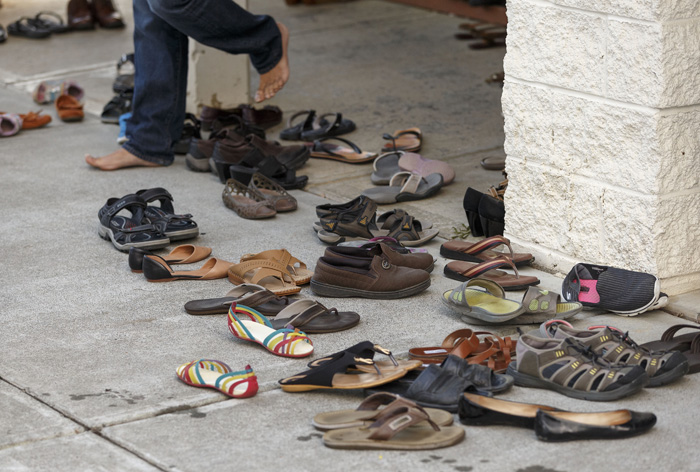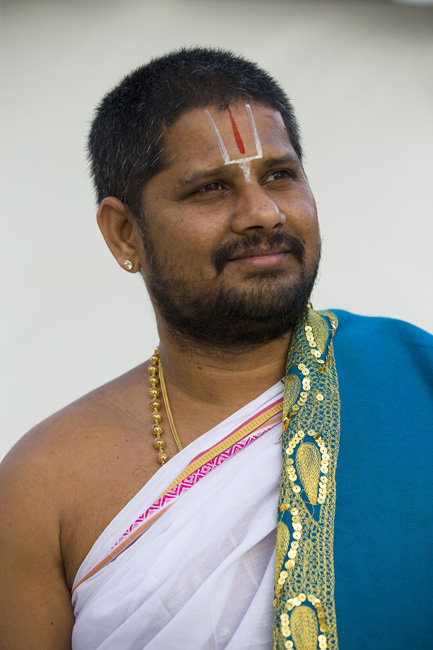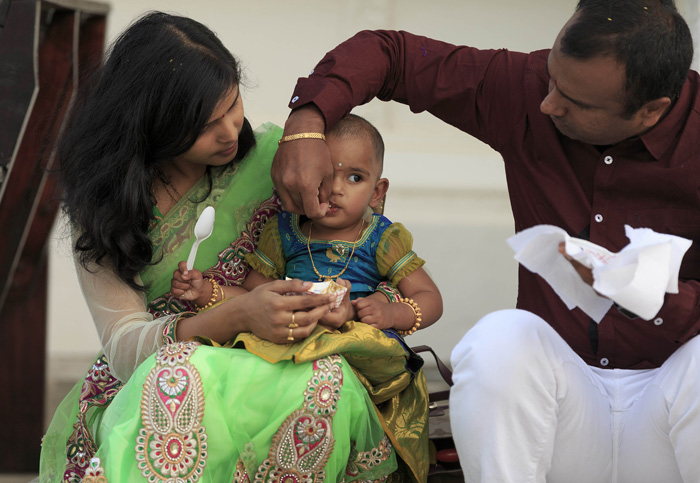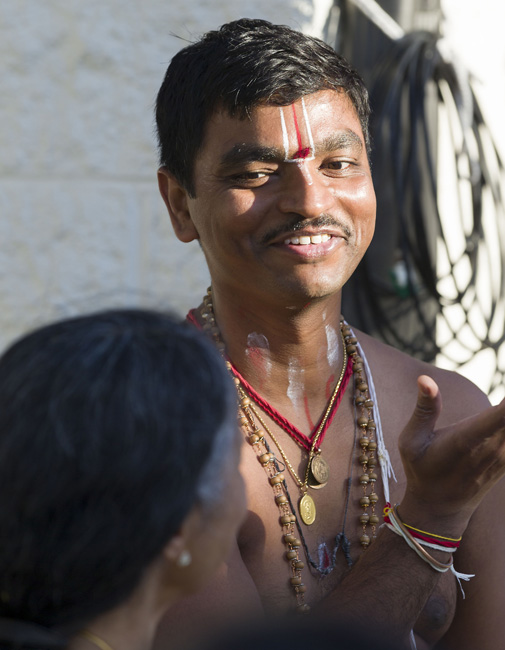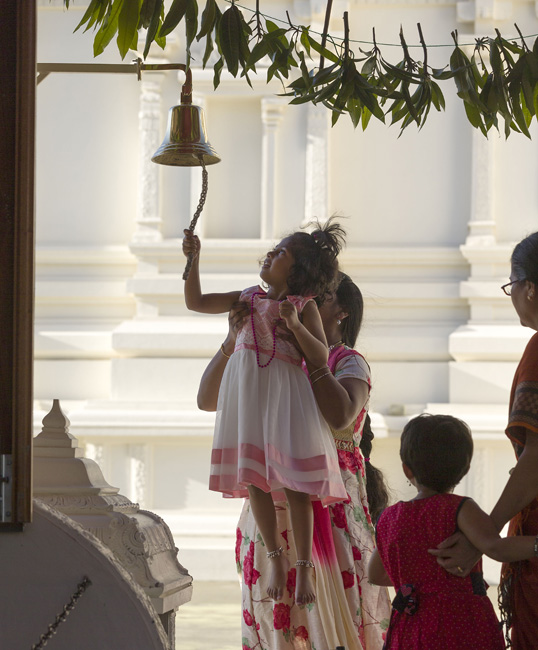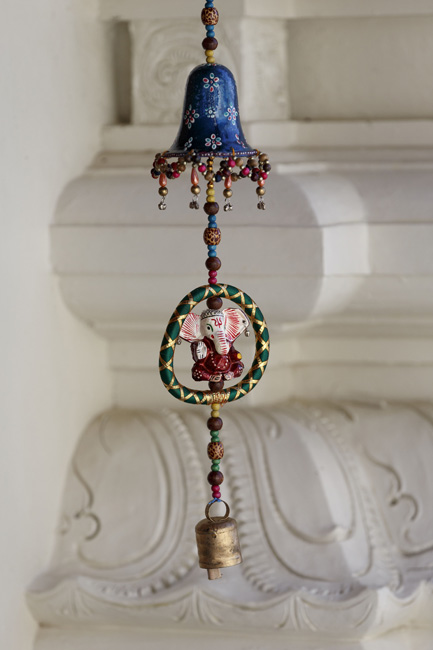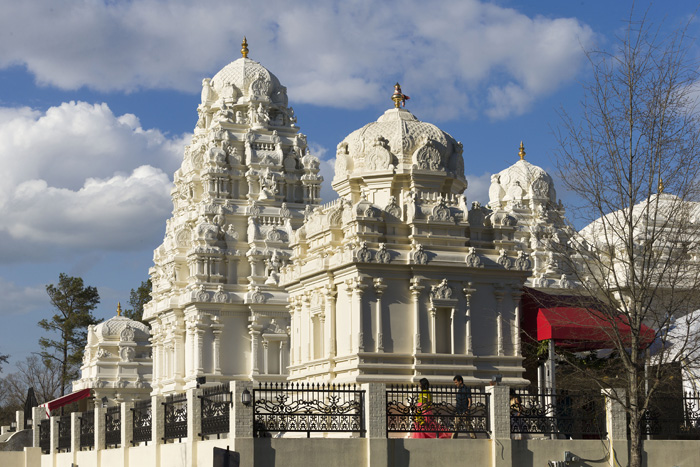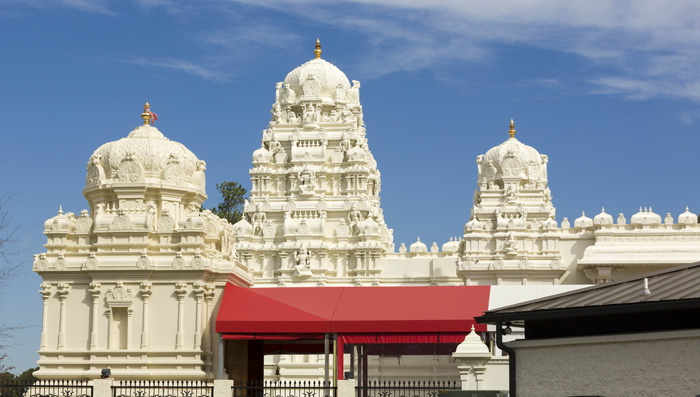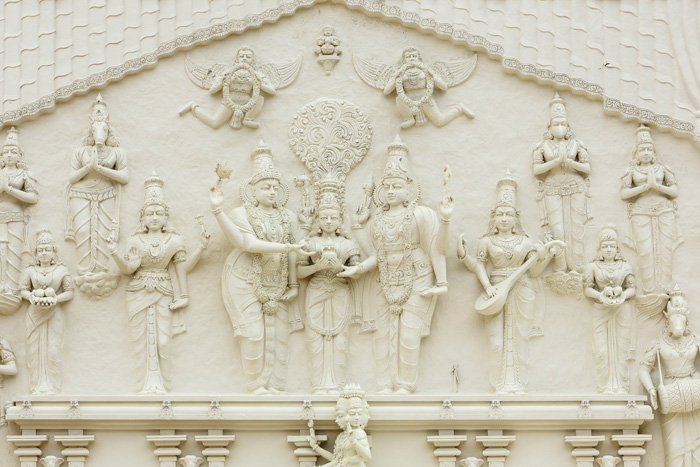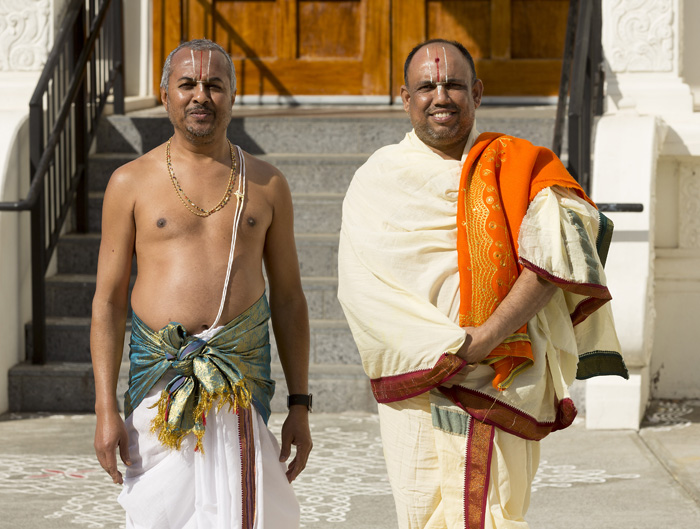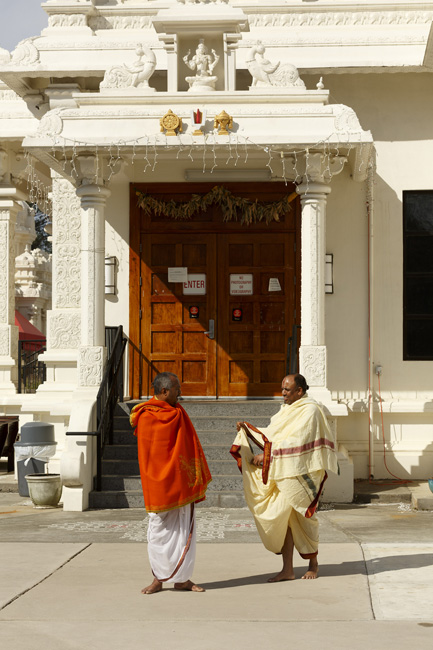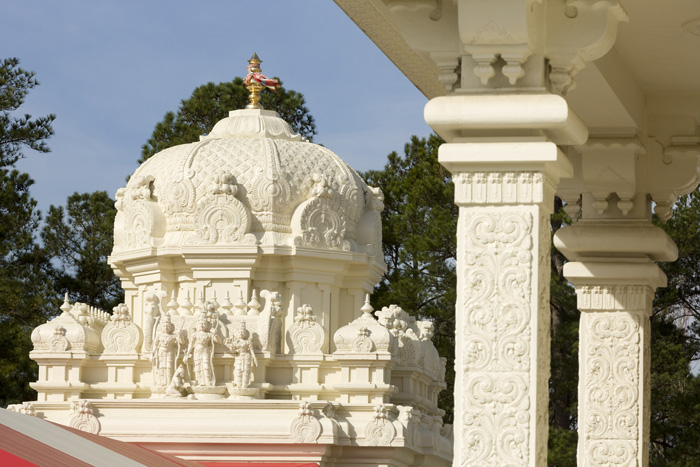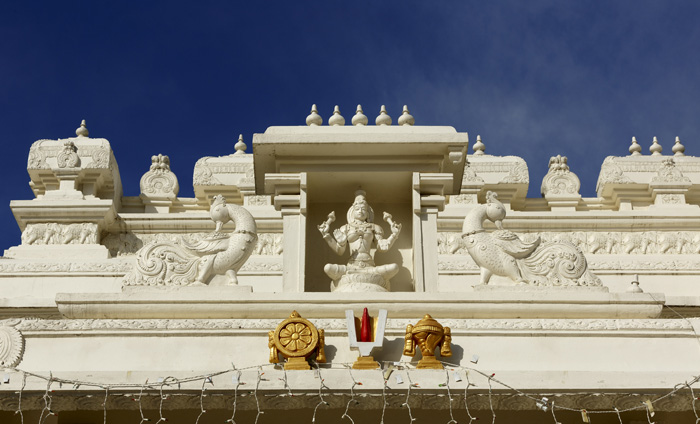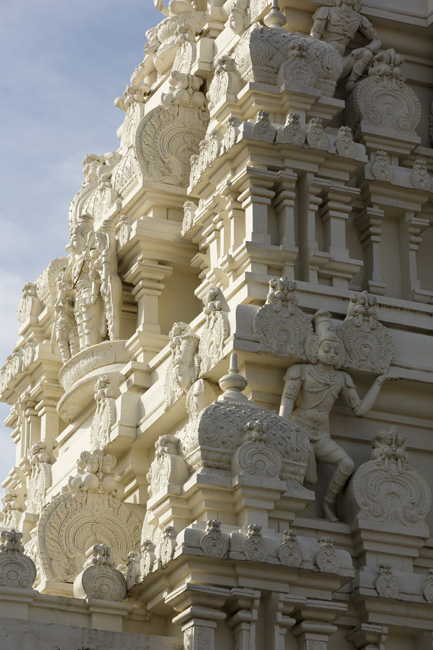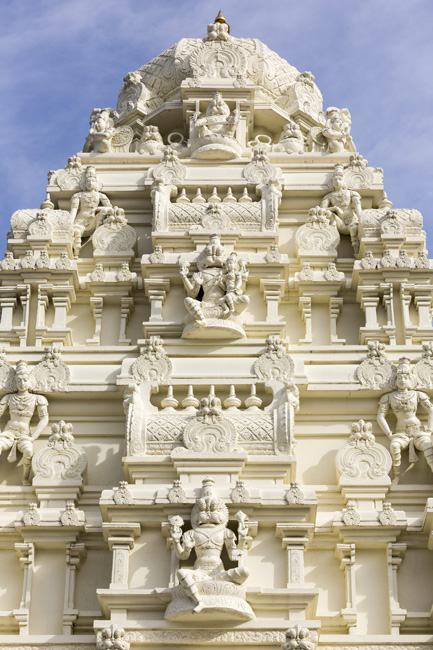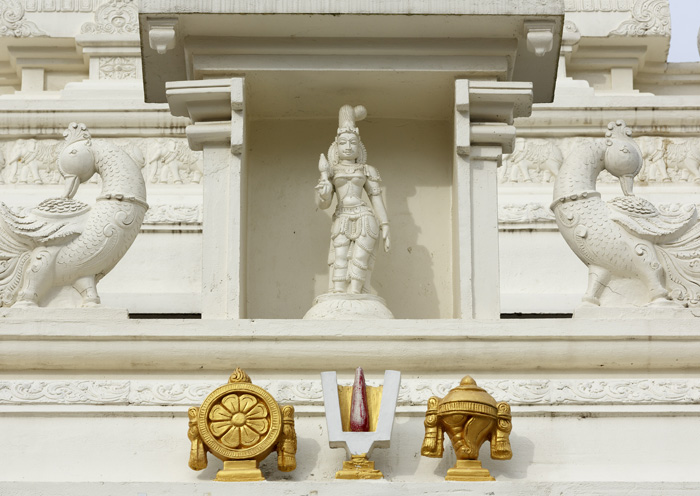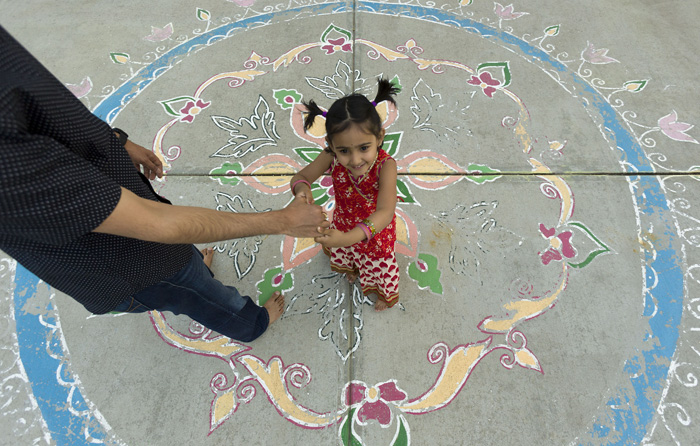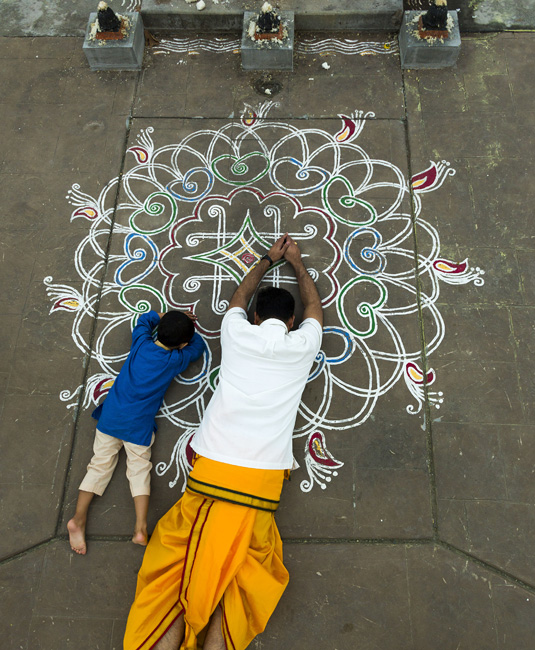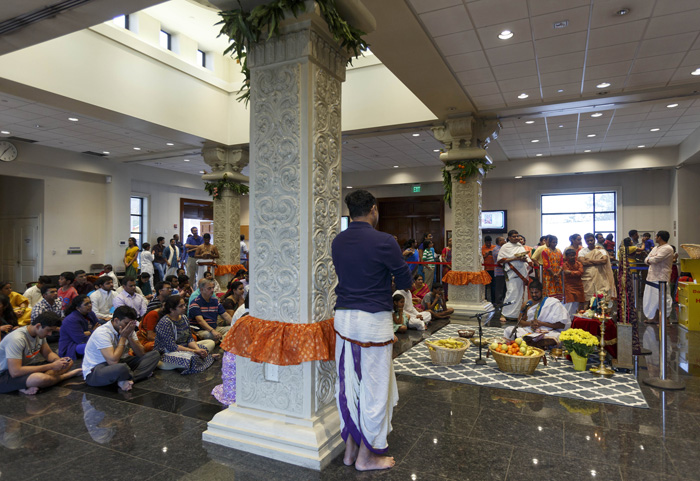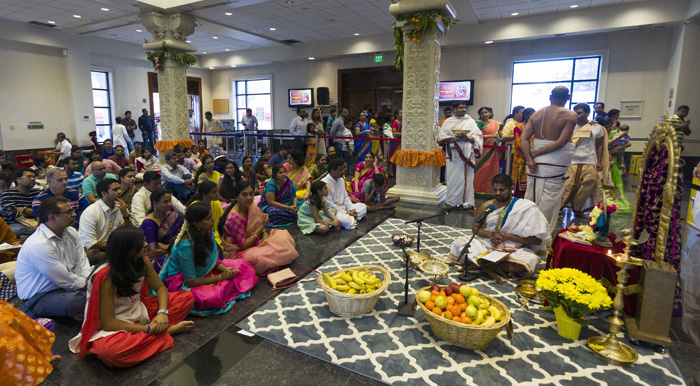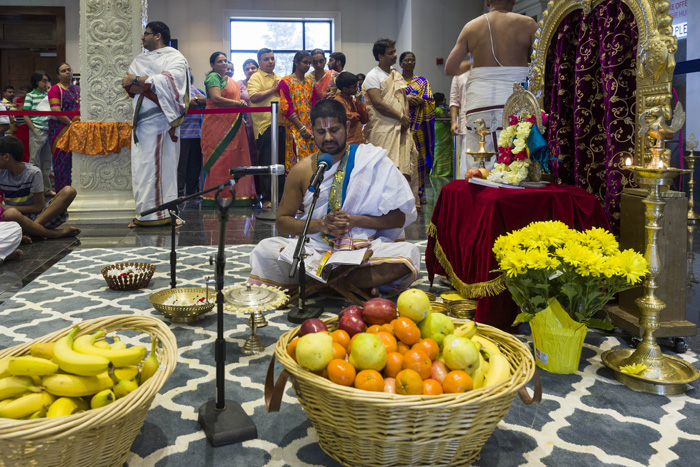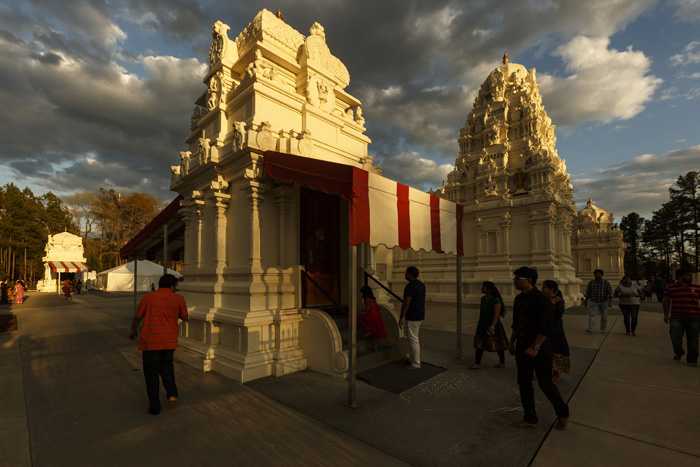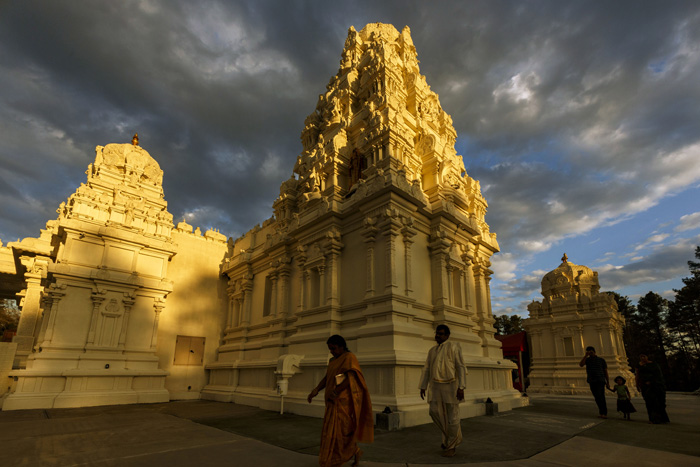The late afternoon sun kissed the top of the Sri Venkateswara Temple like a blessing.
In the courtyard, hundreds of devotees lifted their prayers as they circumambulated the Cary temple, stopping now and again to pay their respects at smaller shrines. The evening ceremony was part of Ugadi, a festival in late March marking the lunar New Year according to the Hindu calendar.
Hindus see the divine everywhere, especially in nature, so the open-air courtyard with its view of the sky and the temple’s ornate exterior is a sacred space. By walking around and around the temple in a practice called pradhakshna, worshippers focus their thoughts and meditate on the divine.
“The whole purpose of the temple is to store cosmic energy and use cosmic energy from nature. It’s also recognizing that God is everywhere,” said Chakrapani Kumara, one of six priests who perform daily rituals at the temple.
The Sri Venkateswara Temple is dedicated to Vishnu, one of Hinduism’s principal deities, and was consecrated in May 2009. The building’s architecture has roots in eighth-century southern India.
Now a fixture of the community, the temple and its staff serve hundreds of devotees throughout North Carolina and surrounding states, says Raghavendra Kasi, a patron of the temple. Educational events and service opportunities are also provided.
“The temple brings the community together, establishes our faith in God, and ultimately shows the way to reach God,” he concluded.
Photographer Jonathan Fredin shares his images of the Sri Venkateswara Temple and the worshippers who welcomed him as they celebrated Ugadi.




